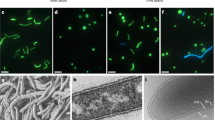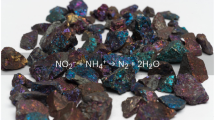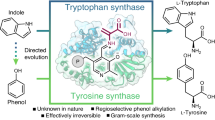Abstract
Quastel and Wheatley1 have demonstrated that cystein and glutathione promote the ærobic fermentation in baker's yeast. Cystein inhibits very strongly the respiration in this material. We have confirmed these results for a Swedish baker's yeast2. In our experiments, carried out generally at 30° and pH 5, the concentrations of glucose as well as those of cystein have been greatly varied. In higher concentrations of glucose alone (0·027-0·108 m.mol per 2·4 c.c. suspension containing 20 mgm. fresh yeast) the rate of ærobic fermentation is low at the beginning of the experiment but increases soon considerably. High concentrations of glucose give an effect similar to that following the addition of cystein to lower concentrations of glucose. In presence of cystein, however, the rapid ærobic fermentation starts immediately upon the addition of glucose. In the absence of cystein fermentation comes to an end, giving place to a slow respiration. The amount of carbon dioxide formed through ærobic fermentation is directly proportional to the concentration of glucose. The maximum rates of fermentation are directly proportional to log (glucose), range tested: 0·00455-0·108 m.mol per 2·4 c.c. suspension. During the period of rapid ærobic fermentation the added cystein is partly oxidized. The quotient total CO2/O2 decreases fairly rapidly during the period of ærobic fermentation. The mean of the total CO2/O2. values during the period of ærobic fermentation is directly proportional to log (cystein), or in other words, to the oxidation reduction potential of the cystein solution (cf. Dixon and Quastel3). The range tested was 0·0002-0·005 m.mol cystein per 2·4 c.c. suspension.
This is a preview of subscription content, access via your institution
Access options
Subscribe to this journal
Receive 51 print issues and online access
$199.00 per year
only $3.90 per issue
Buy this article
- Purchase on Springer Link
- Instant access to full article PDF
Prices may be subject to local taxes which are calculated during checkout
Similar content being viewed by others
References
Biochem J., 26, 2169 (1932). This paper unfortunately was overlooked in our previous publication2.
Die Naturwiss., 25, 540 (1937).
J. Chem. Soc., 123, 2943 (1923).
Sörensen, M., and Haugaard, G., Biochem. Z., 260, 287 (1933).
Willstätter, H., and Rhodewald, M., Hoppe Seylers Z. 2, 247, 269 (1937).
cf. Meyerhof, O., "Die chemischen Vorgänge im Muskel" (Berlin, (1930).
Biochem. Z., 265, 133 (1933); 268, 205 (1934).
Author information
Authors and Affiliations
Rights and permissions
About this article
Cite this article
RUNNSTRÖM, J., SPERBER, E. Action of Cystein on Respiration, Fermentation and Synthesis in Yeast Cells. Nature 141, 689–690 (1938). https://doi.org/10.1038/141689a0
Published:
Issue Date:
DOI: https://doi.org/10.1038/141689a0
This article is cited by
-
Neue Beitr�ge zur physiologischen Grundlage der Vegetativisierung des Seeigelkeimes durch Lithiumionen
Wilhelm Roux' Archiv f�r Entwicklungsmechanik der Organismen (1940)
Comments
By submitting a comment you agree to abide by our Terms and Community Guidelines. If you find something abusive or that does not comply with our terms or guidelines please flag it as inappropriate.



